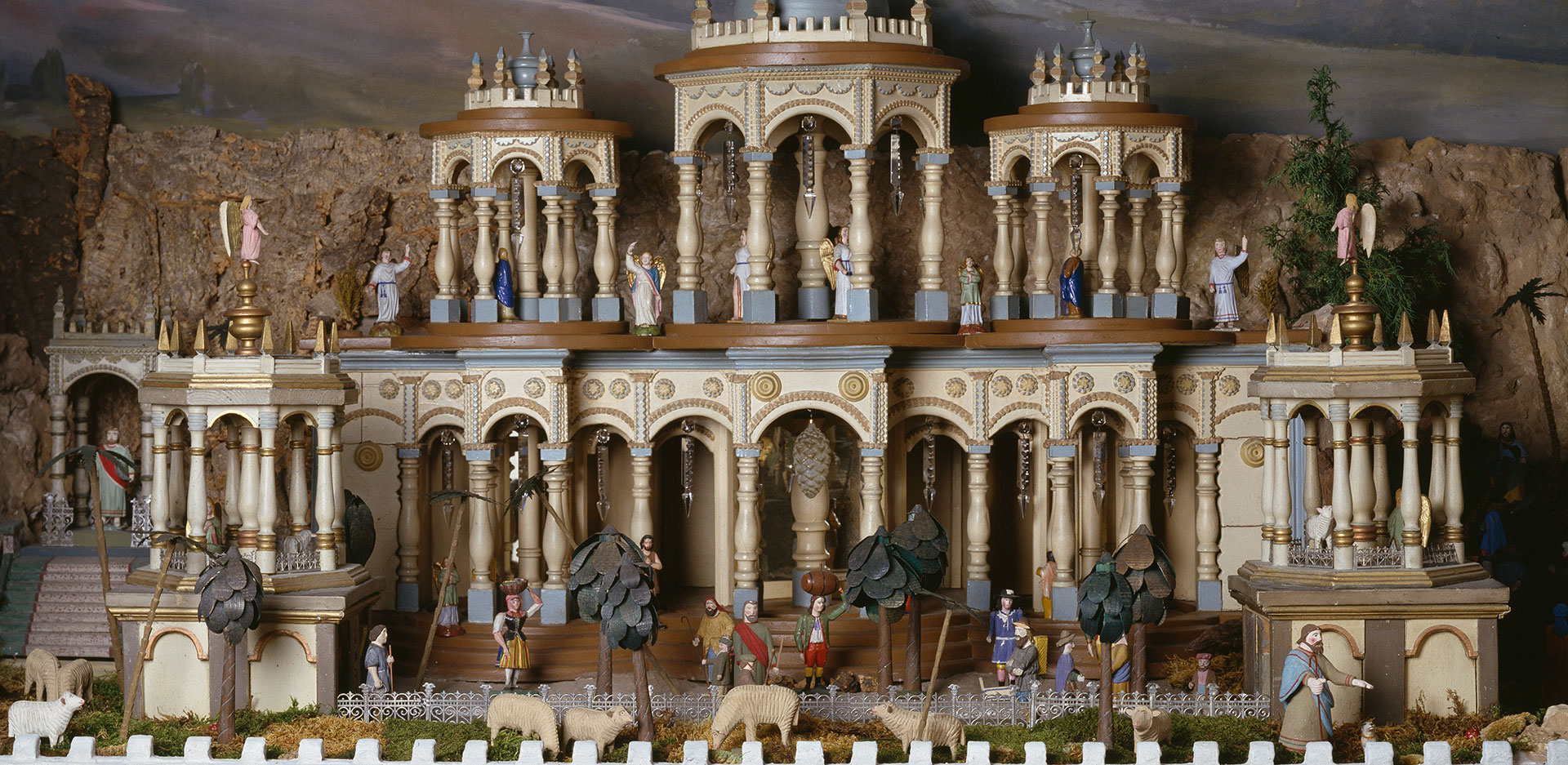The Giant Mechanical Nativity Scene from the Ore Mountains
Permanent exhibition
Museum Europäischer Kulturen
One of the highlights of the permanent exhibition at the Museum Europäischer Kulturen is the mechanical ‘Weihnachtsberg’, a giant nativity scene set in a hillside town that was fabricated in the 19th century in the Ore Mountains, near the border of Germany and the Czech Republic. Spread over 15 square metres, over 300 figures re-enact the most important stages in the life of Christ, from the Annunciation to his birth in the manger, the story of the Passion, his suffering and death, and finally his resurrection.
Almost half of the figures can move. The object was built by Max Vogel, a painter from Neuwürschnitz. The last time he fully assembled the scene was in 1940, after which it was packed away in the attic for decades, until Karl-Heinz Fischer acquired it and revived it in 1987. Hidden beneath the scene, Vogel created a small technical wonder made up of hundreds of wheels and cogs, shafts and leavers, wires and threads. Visitors can observe the sheep as they move about the meadows, the procession of the Three Kings making their way to the stable in Bethlehem and the Holy Family embarking on their flight into Egypt.
Known as a traditional object from the Ore Mountains in the 19th century (but also found in other European countries), the plethora of mobile figures continue to captivate young and old alike. A series of media stations give visitors the chance to learn more about the object, to read up on the individual scenes in the Bible, or to get a closer look at the sophisticated mechanics and winches.
A permanent exhibition by the Museum Europäischer Kulturen, Staatliche Museen zu Berlin.
Offers and events
Adults
Teenagers
Children & families
Related content
Exhibitions
Source : Museen zu Berlin








